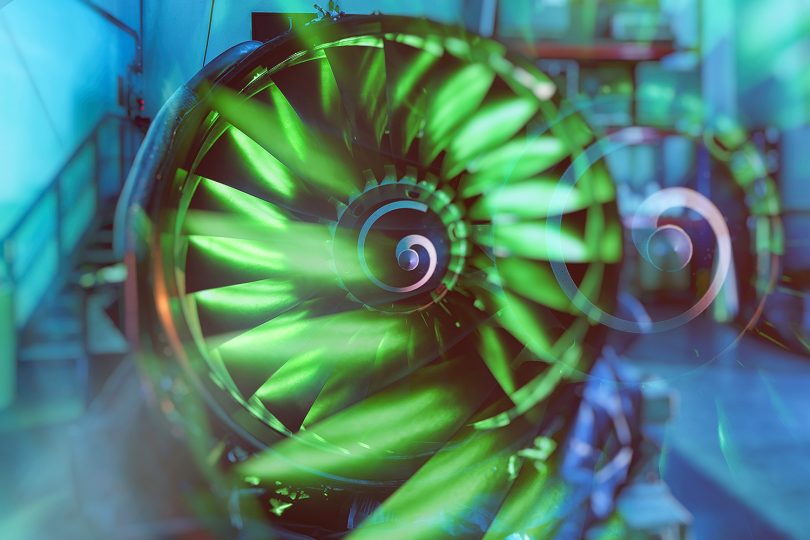The Thrust of Tomorrow Focus on Research: Energy Transition in Aviation
The rise in air traffic is connecting people around the globe, but it places a strain on the environment and our climate. New ideas are needed to reduce fuel consumption, noise and emissions, and aircraft engines play a key role in this. “Modern propulsion systems are already very efficient. It will be difficult, but not impossible, to improve them further”, says Nils Budziszewski, Research Associate at TU Braunschweig’s Institute of Jet Propulsion and Turbomachinery. As part of the Energy System Transformation in Aviation project, he is researching the design and integration of innovative propulsion systems.

Nils Beck, Research Assistant at the Institute of Fluid Mechanics. Credit: Jonas Vogel/TU Braunschweig
One promising technological approach in the experts’ opinion is Boundary Layer Ingestion (BLI), in which a propulsion system sucks in ingest the boundary layer of the fuselage, increasing the engine’s propulsive efficiency. Under this pioneering technology, the engines are no longer positioned on the wings, but rather in a new location on the aircraft, closely integrated into the main body – which also results in reduced drag. In aviation research circles, various concepts for this are currently under discussion, and options are being examined.
“We set ourselves apart from other research approaches by examining BLI technology and engine integration in conjunction with laminar flow technologies. We are combining the two concepts”, explains Nils Beck, Research Associate at TU Braunschweig’s Institute for Fluid Mechanics. A laminar, or homogenous, flow reduces friction and thus fuel consumption and emissions. Beck and his teams are also part of the Energy System Transformation in Aviation project. They are developing a Laminar Flow Control system that sucks away removes part of the low momentum flow on an aircraft’s fuselage and wings, reducing aerodynamic instabilities. That air is then fed into – or rather, sucked in by – the engine.

Nils Budziszewski, Research Fellow at the Institute of Jet propulsion and Turbomachineryof the TU Braunschweig. Credit: Jonas Vogel/TU Braunschweig
However, the combination of both technologies and their technical implementation “is far from trivial”, Budziszewski stresses. “The air flow around the engine is no longer even. The air that is sucked in by the Laminar Flow Control system and then fed into the propulsion system is slower than the air that flows around the engine during flight.” To prevent negative effects on power output, new solutions need to be found. Still, the scientists agree that the benefits of their innovative research approach, which aims to improve overall aircraft efficiency, outweigh the disadvantages. To ensure that the results do not end up filed away and forgotten, it is vital for them to be application-oriented – even if “all ideas are good ideas” at this early stage.
Text: Nicole Geffert

